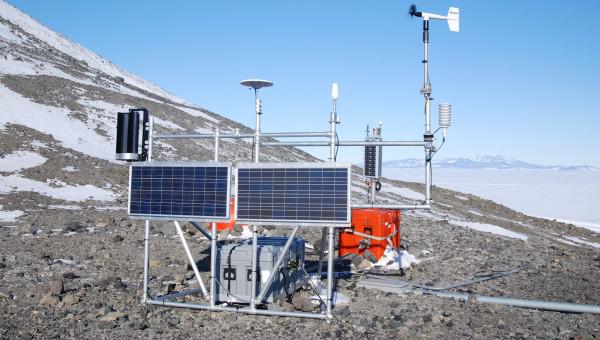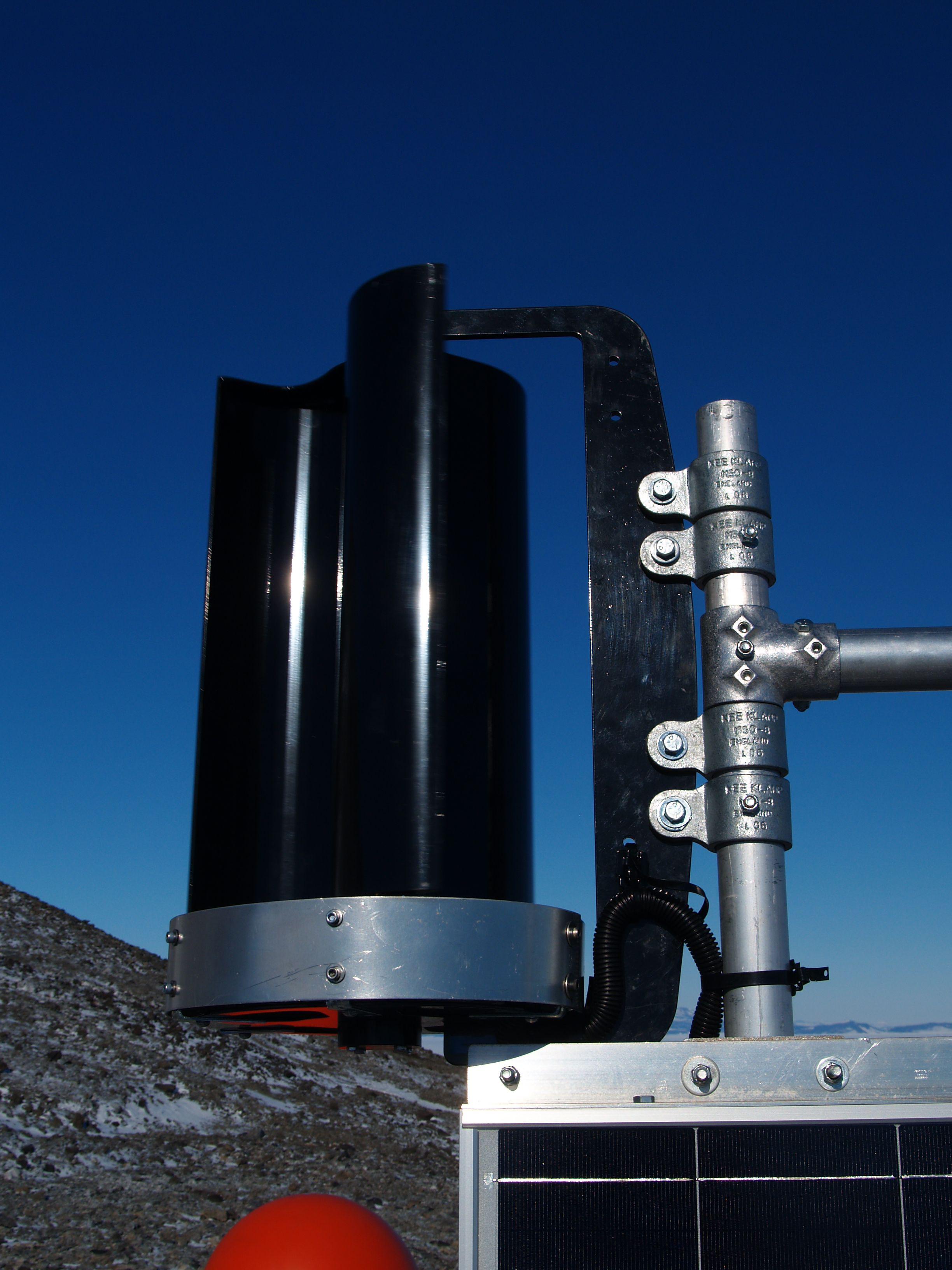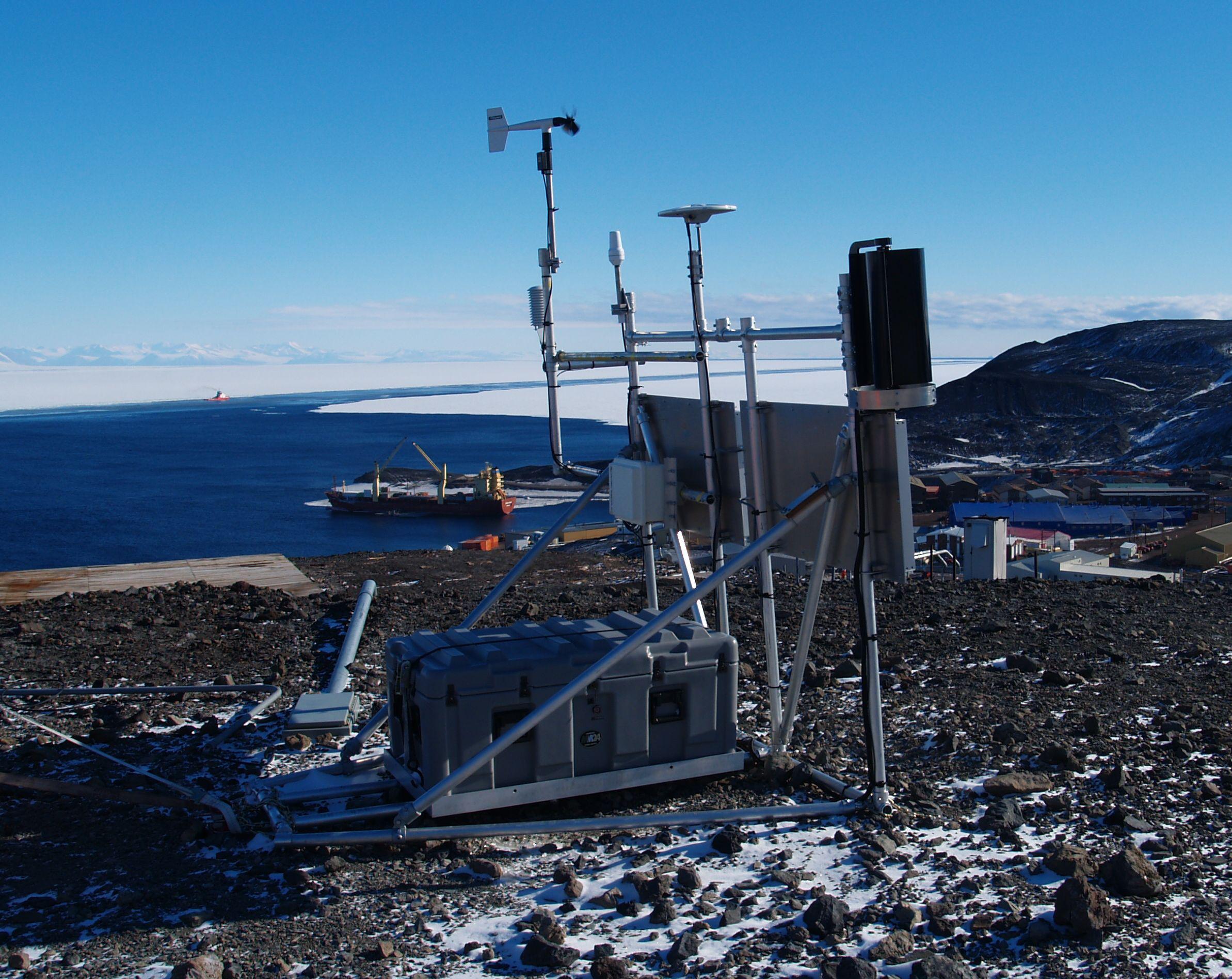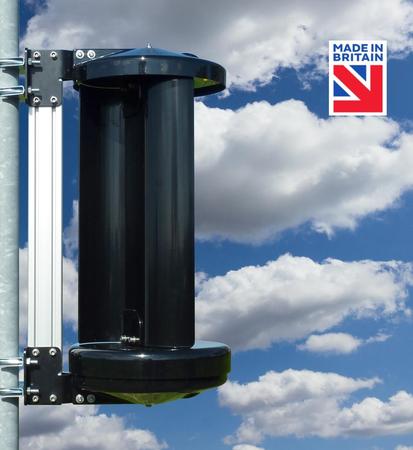UNAVCO operates a GPS survey system at McMurdo Station, Antarctica. In this remote and hostile location, an array of scientific monitoring equipment is used to record a host of geophysical and meteorological data which is then fed back to the research institution. The monitoring station has no readily available power source so a combination of solar and wind is used to power the telemetry equipment with the LE-v50 vertical wind turbine proving robust enough to cope with 120mph for sustained periods.
LE-v150 Extreme Wind Turbine
I just heard from our man at McMurdo and he reports the turbine is holding up well, even through a recent storm with winds over 100 knots. The blades are getting sandblasted a little due to airborne grit but the generator is OKSeth White, UNAVCO
Originally designed for providing modest amounts of off grid power in extreme wind locations, the LE-v50 wind turbine is capable of delivering up to 80 watts of power into battery banks, whilst being able to endure persistent wind speeds in excess of 125mph. This makes the wind turbine perfect for supplying the needs of most monitoring and telemetry equipment.
The wind turbine’s design is based around a cross-ventilated ‘savonious’ rotor design coupled to a 3-phase axial flux permanent magnet generator. The aluminium alloy blades of the savonious rotor are able to withstand the extreme forces of the wind even whilst the material is at its most brittle – in temperatures below -40 °c – whilst the cross-ventilated design means that the wind turbine is able to deliver power when the winds are more of a breeze.
During high winds, the savonious rotor system reaches a stall point whereby it is no longer able convert the kinetic energy of the wind into rotational energy on the alternator shaft. The low rotational speed means that centrifugal forces upon the rotating components are minimised which further increased the long-term reliability of the machine.
‘Polar’ versions of the LE-v50 wind turbine are often coloured black to absorb the maximum amount of the limited solar radiation; this helps reduce the build-up of rime ice on the wind turbine blades and on the body.
Products Featured in This Case Study
Tell us about your project
Our Off-grid experts will come back with recommendations








